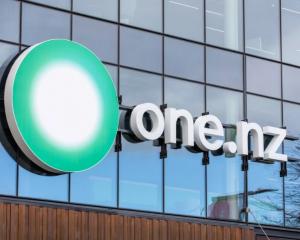Research by Craigs Investment Partners has upgraded Heartland (HNZ) stock from a ''hold'' to ''buy'' recommendation, due to high capital ratio forecasts and low exposure in its overall loan book to the dairy sector.
Craigs broker Peter McIntyre said because of concerns about the possible impact of declining dairy prices, HNZ's share price had fallen almost 20% since February - from $1.41 to $1.14 yesterday.
''While the down side risk is real, we believe the impact is probably overplayed,'' he said.
Fonterra's current season forecast sits at $5.25/kg,
with a revision to be released on Friday next week, while competitor Open Country Dairy last week forecast $3.65-$3.95. Hokitika-based Westland Milk products slashed its next season forecast yesterday, from an earlier range of $5.60-$6 down to $4.60-$5.
About 7% of HNZ's overall lending portfolio was exposed to the dairy sector and the average loan-to-value ratio was 60%, while in the banking sector in general the portfolio exposure is around 15%.
Mr McIntyre said Craigs had forecast a tier 1 capital ratio for HNZ for full-year 2016 of 12.3%, including a 3.8% buffer, against the minimum required of 6%, with 2.5% buffer.
''Heartland is in a better position now to ride out any increase in impairment expense from a temporary slowdown,'' Mr McIntyre said.
Earnings changes had been made for HNZ, to reflect the dairy slowdown, with after-tax profit downgrades for full-year 2016 down by 4% and 3.9% in 2017, Mr McIntyre said.
HNZ's rural loan book for full-year 2015 totals $480 million, of which 40%, or about $192million, is exposed to the dairy sector.
Mr McIntyre said HNZ's loan to value ratio was 60%, which implied the loans were secured against $330million of farm assets.
''The asset values would have to decline by 40% before the equity of HNZ's loans becomes an issue,'' Mr McIntyre said.
Mr McIntyre said the forecast tier 1 capital ratio of 12.3%, meant HNZ had a surplus capacity, more than $100million, from which it could absorb impaired loans, assist with organic growth and/or distribute to shareholders.
Mr McIntyre believed HNZ had made a ''subtle change'' in strategic direction, and was more likely to focus on the less capital-intensive organic growth of its lending, than on further acquisitions.
''Organic growth is less capital-intensive and lower risk, and should free up the surplus capital to fund dividend growth,'' Mr McIntyre said.











